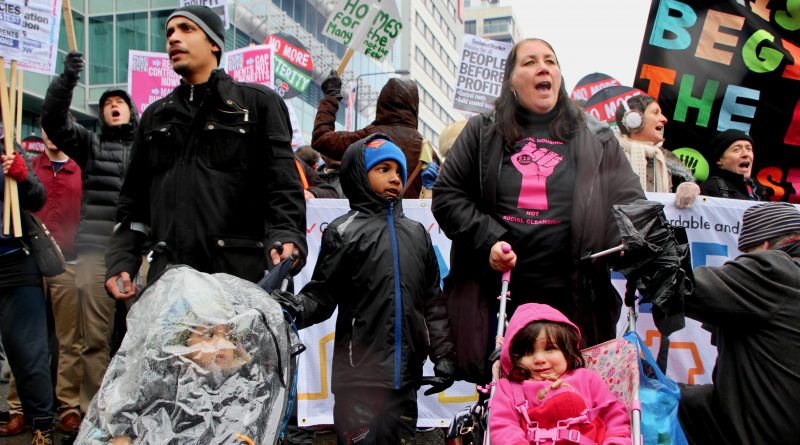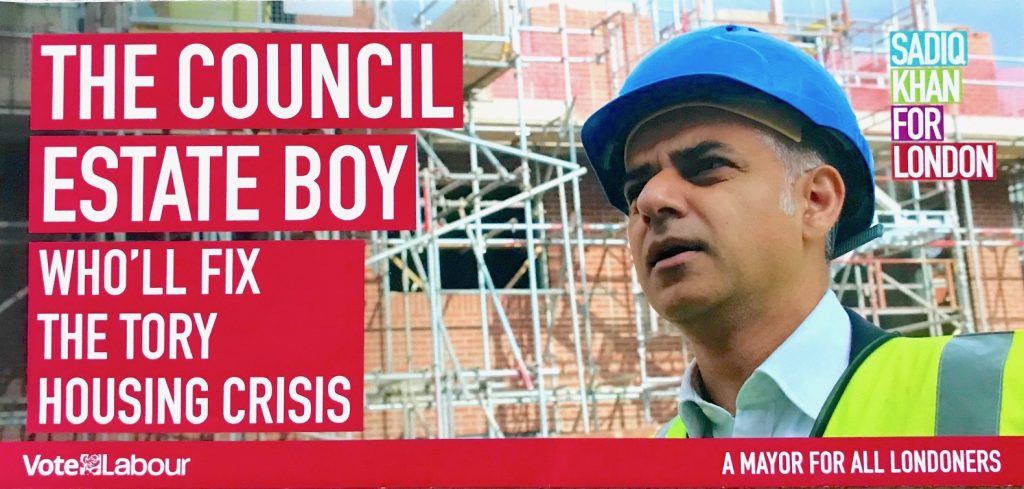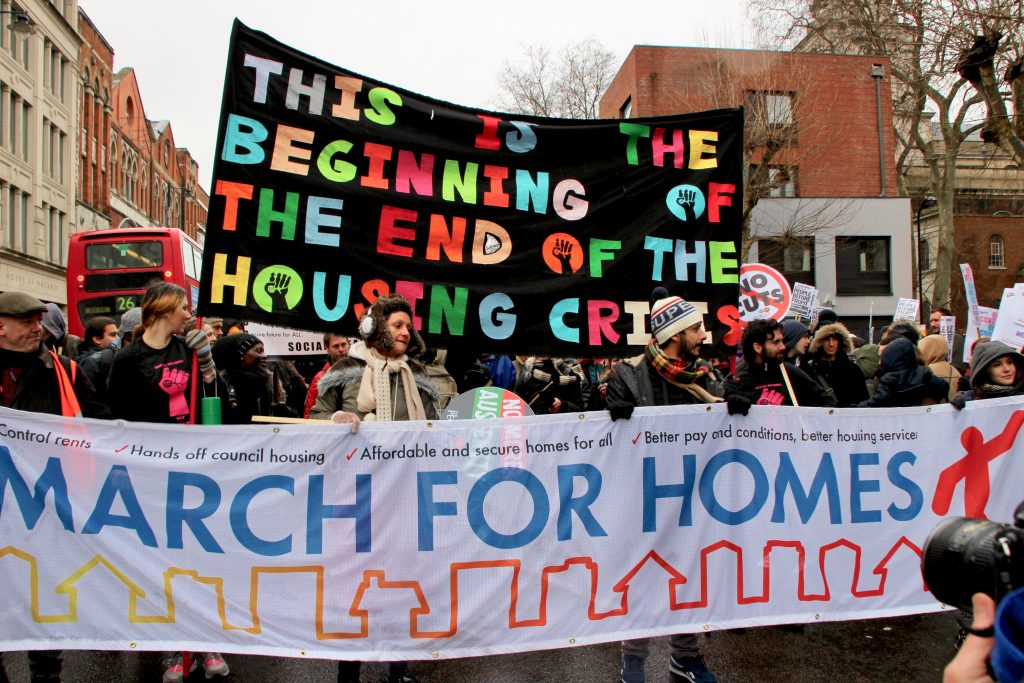
The council house boy
By Paul Coleman
Sadiq Khan, the self-styled ‘council house boy’, fights an Eton boy, Zacharias ‘Zac’ Goldsmith.
It’s May 2016 – and Londoners are scratching their heads. The candidates for Mayor of London, Khan of Labour and Goldsmith the Conservative, veer their respective election campaigns towards bitter and crude personal attacks.
Goldsmith, an Eton-educated son of the billionaire Sir James Goldsmith, taunts Khan by tainting him with tendentious links to Islamic extremism. Khan plays a thinly veiled class card to brand Goldsmith as an out-of-touch ‘Tory boy’.
Khan tells Londoners he is the fifth of eight children born to working class Pakistani parents. Khan says he shared a bunk-bed with one of his brothers in a three-bedroom house on the Henry Prince Estate in Earlsfield in south London.
Khan constantly tells London’s voters his father was a bus driver. Voters find Khan’s gushing repetition comical.
Oafish eccentric
London politicians claiming authentic council housing roots is nothing new. Ken Livingstone, London’s first Mayor, also lived on a south London council estate in his younger days. Livingstone ran London until 2008 when he lost to Alexander Boris de Pfeffel Johnson, another Eton-educated Conservative.
During his two-term mayoralty, New York-born Johnson always tries to play down his upper class roots, playing up a contrived self-image as an oafish eccentric. The grandiosely loquacious Johnson seizes every possible chance to appear laddish whenever he sees a TV camera or photo opp.
Johnson also seeks to convince Londoners that he truly believes in an old-fashioned conservatism, blessed with core values and policies that favour the ‘common man’. Yet many Londoners see right through Johnson’s transparent ‘servant of the people’ masquerade – and an eight-year ‘Boris effect’ scuppers Zac Goldsmith’s campaign.
Khan’s ‘boy from the backstreets’ narrative thus pays off. Londoners elect Khan as their city’s third elected Mayor.
However, Khan also hails himself as the ‘council house boy who’ll fix the Tory housing crisis’ – and this is a campaign promise that will come back to haunt Khan’s mayoralty.

Residents’ ballots
Khan makes a number of campaign pledges to deal with the ‘housing crisis’, including one that says as Mayor he will require that council estate regeneration ‘only takes place where there is resident support, based on full and transparent consultation’. As Mayor, Khan claims he will only permit the demolition of council estates ‘where it does not result in a loss of social housing, or where all other options have been exhausted, with full rights to return for displaced tenants and a fair deal for leaseholders’.
But, after the election, Khan pours cold water on demands to grant ballots to tenants and leaseholders. They demand ballots so they can vote ‘yes’ or ‘no’ to the demolition of their homes. In December 2016, Khan publishes a first draft of his Good Practice Guide to Estate Regeneration, that states: ‘A potential reason for caution around using ballots or votes is they can risk turning a complex set of issues that affects people in different ways over many years into a simple ‘yes/no’ decision at a single point in time.’
Resident campaigners on estates subject to demolition and redevelopment voice their disappointment and dismay that a Mayor – a Labour Mayor at that too – fails to grasp the democratic principle that council estate residents should have a decisive say about whether their homes are demolished or not.
Sian Berry, a Green Party member of the London Assembly, describes Khan’s draft guidelines as “almost useless as a resource for residents who want to…have a meaningful say in whether their homes are demolished”.
Khan puts his first draft out for consultation until March 2017. Around 95% of respondents demand ballots for residents.
Constellation of choices
Sadiq Khan takes up office as Mayor of London in an early 21stCentury era when millions of Londoners are struggling to survive on stagnant and frozen lower incomes. Politics is a constellation of choices – and governments take decisions that maximise damage to the greatest number of people who can least protect themselves. Both Labour and Conservative governments take decisions that relentlessly lowers people’s real standards of living.
Gordon Brown’s Labour government decides not to invest in the real economy where working class people live and work. Rather Brown compels taxpayers to bail out reckless banks and bankers who caused the catastrophic banking and finance meltdown of 2007-09.
Similarly, David Cameron and George Osborne’s Conservative-led coalition government then plunges Londoners into years of austerity, savagely cutting public spending, services and jobs. Cameron and May’s Conservative majority governments entrench these cuts and wage freezes. Demand is sucked out of the economy.
Five people die as a result of the riots of August 2011 across London and other cities in England. Under austerity, Londoners suffer a chronic lack of police officers. The tragic Grenfell tower fire kills 72 people on the Lancaster West council estate in June 2017 and highlights ongoing disinvestment in London’s fire service.
Priced out
Under Johnson’s mayoralty (2008-16), Londoners also struggle with London’s increasingly chronic shortage of genuinely affordable homes to buy and rent. Parliament – Westminster – fails to enable the State – Whitehall, City Hall and local councils – to build much-needed new council homes.
Local authorities, both Labour-led and Conservative, rubberstamp ‘regeneration’ schemes pursued by corporate developers, housebuilders and housing associations. Instead of building desperately needed council homes, these developer-led, council-backed schemes build high-density towers and blocks of primarily luxury apartments.
These new homes are sold and rented at prices way beyond the means of Londoners on average and lower incomes. Thousands of London households, especially ones with younger members, thus find themselves priced out of the city of their birth where their families have lived for generations.
For instance, work begins on building 2,900 private new homes at Colindale in north London on a 47-acre site formerly occupied by the Metropolitan Police’s training college. Another 7,000 mainly private new homes in a vast development engulf Wembley Stadium. The Kings Cross Central ‘regeneration’ scheme nears completion on former railway lands – but with very little ‘affordable’ housing.
The small proportions of homes sold as ‘affordable’ by these schemes are unaffordable to the majority of Londoners who desperately need genuinely affordable homes. Such ‘regeneration’ schemes, replicated across London’s 32 boroughs, represent a massive missed opportunity to provide secure, decent and affordable homes for generations of Londoners.
Ironically, Johnson designates Colindale/Burnt Oak and Wembley as ‘Opportunity Areas’ – ripe for developer-led ‘regeneration’ for profit but ruled out for council or social housing for Londoners.
Broken and shredded
Johnson’s reign as Mayor proves useless for Londoners who desperately need genuinely affordable homes. It also becomes a nightmare for tens of thousands of council estate residents who live in homes with secure tenancies and subsidised rents.
On Johnson’s mayoral watch, under the guise of ‘regeneration’, the State collaborates with London’s real estate complex – global property developers, landowners, volume housebuilders and corporately mutated housing associations – to systematically demolish Londoners’ existing council homes and estates.
Councils expensively ‘decant’ their once secure council tenants and then permanently displace them. Right to Buy leaseholders not only lose their homes but receive compensation way beneath the market value of their homes.
Many council tenants and leaseholders are forced to go – not just to other parts of their boroughs – but are compelled to try and restart their broken family lives in towns outside of London with less job opportunities and weaker micro-economies. Family, neighbourhood and community ties – nurtured over generations – are shredded.
Johnson justifies this ‘social cleansing’ of working class people from London with the usual ‘regeneration’ litany; ‘regeneration is just like making an omelette; to make an omelette some eggs must be broken.’
Slice through
‘Regeneration’ begins with local councillors and appointed planning officers conspiring to cheaply transfer valuable publicly owned lands and council estates to global private interests. Locally elected politicians cynically cite central government austerity as a pretext.
London’s burgeoning ‘regeneration’ cohort of ‘placemakers’ – ex-politicians and planners, architects, property lawyers and gleeful estate agents – then makes it relatively easy for global corporate property developers and overseas real estate investors to slice through local planning processes to secure political and legal backing for their schemes.
It’s true that London’s chronic shortage of genuinely affordable homes for Londoners on average and lower incomes originated long before Johnson, even before Livingstone’s 2000-08 era. Prime Minister Margaret Thatcher’s launch of the Conservative Party’s flagship Right to Buy policy in the late 1970s began consecutive net annual losses of council homes.
However, under Johnson, many Londoners suffer directly from Johnson’s thinly veiled aggressive ideological mission; to help a twin axis – of global corporate real estate interests and London’s ‘regeneration’ industry – to make as much money as it can whatever the social consequences to Londoners.
Real estate jamborees
This powerful global competing cast of corporations scours the Earth excavating hyper-profits from wherever they can be extracted. Johnson shambles after them around the world bellowing that London is full of rich pickings that can easily be enjoyed through the acquisition of public land for luxury property development.
However, Johnson does not act alone in this Trojan Horse mission. The leaders of many local London councils actively collaborate with his ambitions. The ‘boys and girls’ who lead boroughs like Southwark, Haringey and Newham might represent Labour but they serve global capital rather than their electors once they get their hands on power.
They too jolly with Johnson to promote the sale of council land and estates to foreign investors at annual global real estate jamborees – such as MIPIM at Cannes in the south of France and the London Real Estate Forum held in London’s Berkeley Square.
Fight back
By mid-2016, the majority of working class Londoners remain demoralised and passive in the face of this onslaught. Almost 40 years of neo-liberalism has taken its toll running through Thatcherism to Blair, Brown, Cameron and Osborne, not forgetting the frightening global banking and finance meltdown of 2007-09 and subsequent years of neo-liberal driven recession and austerity.
However, a significant minority of Londoners fight back against the domination of London’s financialised political economy by real estate capital and ‘regeneration’ industry agents. Working class council estate residents and housing activists wage a series of separate campaigns across London against developer-led, council-backed demolition and redevelopment of their homes, neighbourhoods and communities.
These various campaigns take deputations to council meetings. Street campaign stalls and protest marches proliferate. Social media spreads the word that ‘regeneration’ in reality means the ‘social cleansing’ from London of working class Londoners, whatever their ethnic and cultural background.
March for Homes
These doughty campaigns fight separate localised battles. However, Johnson’s mayoralty stokes up a hitherto unseen unity. On a freezing Saturday afternoon – 31 January 2015 – these campaigns coalesce under the united banner of the ‘March for Homes’.
Thousands of residents from council estates and housing activists from across London gather at St Leonard Church in Shoreditch. Many of these protestors are council tenants whose homes are threatened by developer-led, council-backed demolition and redevelopment schemes pursued under the guise of ‘regeneration’.
They march behind a banner with an optimistic slogan, ‘This is the beginning of the end of the housing crisis’. They march past the Tower of London and over Tower Bridge to what they call ‘Boris’ bunker’ at City Hall.
They clamour for rent controls on private landlords and for affordable and secure homes for all. They also demand that developers take their ‘hands off council housing’.
“The housing market madness did not fall out of the sky,” exclaims one protestor to the mass of protestors thronged outside City Hall. “It was caused by politicians who opened the door to developers to run amok in our city.”
Some of the marchers breakaway from the main body of the protest to occupy empty homes on the Aylesbury Estate. The Notting Hill Housing Association wants to demolish the Aylesbury – one of the largest public housing estates in western Europe – ‘in partnership’ with Southwark Council, a Labour authority led by social democrat Blairites, Peter John and Fiona Colley.
Estate residents’ ballots
In the months after the March for Homes, Johnson’s mayoralty begins to fizzle out as he brazenly scopes out his naked strategy to be Prime Minister. Khan’s election in May 2016 allows the ‘council estate boy’ to wield considerable power.
For instance, Khan controls a £4.8 billion programme to build ‘affordable’ homes and so could strongly influence local authorities on planning policies and could pressure housing associations, developers and housebuilders to build more council and social housing for Londoners. Khan could also compel private landlords to improve their offer to tenants.
At the same time, the March for Homes has ignited a growing stridency in movements fighting back against developer-led, council-backed ‘regeneration’ and social cleansing.
For the first time, concerted demands are made on a London Mayor to guarantee that council estate residents will be given the right to vote ‘yes’ or ‘no’ in a ballot to a proposed ‘regeneration’ scheme – especially when that scheme seeks the Mayor’s permission to get millions in public money from the Greater London Authority.
Campaigners point to the referendum given to the entire nation on whether or not the United Kingdom should remain within or leave the European Union. Surely, people living on a council estate should be allowed to vote on whether their homes are demolished or not?
That demand tumbles heavily on Mayor Khan, elected as the ‘council estate boy’ who’ll fix the housing crisis. Khan though kicks this issue down the road until 2018.
A very British ballot
Finally, in July 2018, two years after his election, Khan, the ‘council house boy’, yields to campaigners’ pressure and introduces this modicum of power for council estate residents – bolstering his weak first draft of his Good Practice Guide to Estate Regeneration.
However, the introduction of ballots comes far too late for thousands of council estate residents whose homes face demolition by ‘regeneration’ schemes. Khan is even accused of rushing the GLA to sign funding contracts with developers and councils so ‘regeneration’ schemes can get going before ballots are introduced.
Residents on council estates also see that Khan’s ballots are laden with hefty conditions.
Residents suspect too that Khan has ensured other ‘regeneration’ deceits lurk in the detail of these very British ballots.
Further Reading In Depth: Residents’ ballots – an introduction
© Paul Coleman, London Intelligence, 2019

London Intelligence ® is a registered trademark of London Intelligence Limited.
